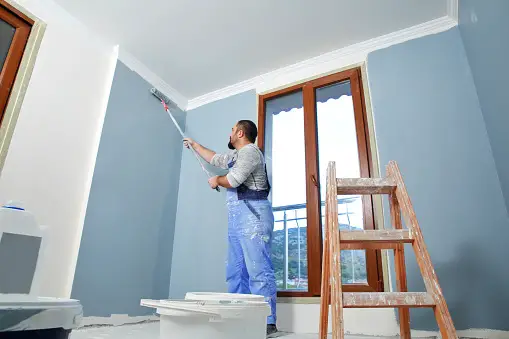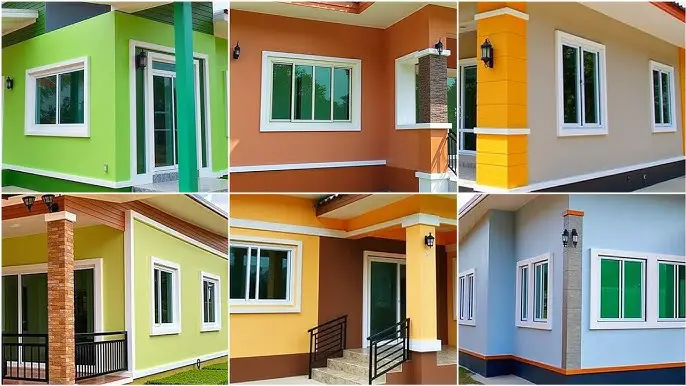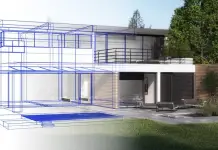Painting, as the art of creating images, has been documented to have started right from the creation of man, where early man used mud stains of iron oxides to paint on their bodies and any available surfaces. Today, painting is a significant factor that involves home maintenance and improvement.
Why Paint Your Home?
However, many advantages come with painting your home, both the interior and exterior. With a few simple decisions and investing an appreciable amount of time and energy, you can gain a completely new look for your house and considerably better condition. Benefits of using this painting company in Grand Rapids include:
Improves Curb Appeal:
Priming a house usually helps to enhance its look; homes painted well will certainly look attractive. With the help of a good paint job, it can turn a dull and boring front of the building into something colourful and inviting. The following change is sure to enhance curb appeal while also adding to the overall value of your home:
Increases Property Value:
Hiring professional painters to paint your home is always a great idea since it will add to the home’s value. When attracting buyers, the property’s exterior isn’t less significant than the interior, so the home’s outside should be well-maintained.
Protects Surfaces:
There is more to painting than just its aesthetic value; it also has functional uses. It ranges from protecting surfaces from harsh weather conditions like sun, rain, and wind. If you use good quality paint that will stick more firmly on the surface of the building, you save yourself the cost of repairs caused by weathering or tearing.
Easy Maintenance:
Painting will also make its maintenance easier in the future because one will not have to work as hard as one does today. If the exterior is properly maintained, a touch-up may not be regularly needed, and your home exterior will be perfect for many years. It saves time, money, and effort, which can benefit us during future planning and implementation.

Expectations Before Your Painting Project
Certain preparations must be made in painting to ensure a perfect finish. If you are touching up a wall, a piece of furniture, the siding of your house, or even the entire outside of your house, follow these steps to make the new paint job last longer and look even better.
Gather Your Supplies
What will you be needing to paint your home? Some of the most important items include:
Paint: Select an excellent quality paint appropriate for the target surface based on the type of paint selected. Interior paint, such as latex paint, is widely used for walls, and oil paint is used for extremities such as trim and furniture.
Brushes and Rollers: Choose brushes and rollers of different sizes depending on the project to be done. Where possible, synthetic brushes and rollers should be used because of their durability and ease of cleaning.
Painter’s Tape: Secure the doors, windows, and other zones where you want to be masked and shielded with painter’s tape. This will help you get nice, smooth lines.
Drop Cloths: To avoid messing up your floors and furniture, you should lay down drop clothes or use a plastic sheet when painting.
Paint Tray and Liners: Always pour your paint into a paint tray and use a liner to ensure it becomes easy to dip your brush or roller into it.
Surface Preparation
Preparing the surface area is an important step in preparing a good surface area for painting. Here are some steps to follow:
Clean the Surface: Clean the area you wish to paint well to ensure no dirt, dust, or other debris. For general wall cleaning, consider a mild solution of soap and water. For heavily coated metal or concrete surfaces, use a special degreaser.
Repair Damaged Areas: Holes, cracks, or other openings should be properly sanded and filled with the right filler or putty. When the surface is no longer wet, use sandpaper to smoothen and wipe the area.
Sand the Surface: Sanding is important for achieving a smooth conclusion. When using sandpaper, choose one with a finer grain and rub it on the whole area of the furniture or car painting, even the paint or primer that may be chipped.
Prime the Surface: Here, we ordinarily apply a coat of primer to your surface. This will cause you to get a better finish with the paint and help the paint stick to the surface better. Identify the right primer for the paint you wish to apply on your floor surface.
Choosing the Right Paint
Not all paints are the same, and the type of paint you choose can make all the difference in the result of your paint job. Here are some common types of paint:
Latex Paint: Latex paint can be used on walls and ceilings because of its flexibility and ease of application. It dries quickly and can be washed with water, making it versatile.
Oil-Based Paint: Conventional paint, or what is known as Oil-based paint, can resist wear and tear. It is mainly applied when developing trims, doors, and furniture.
Acrylic Paint: Latex paint is made of polyether or acrylic emulsion; acrylic paint is a type of latex paint that provides greater concealment and surface appearance. It is mostly common for application on internal walls and ceilings.
Chalk Paint: Chalk paint is a special kind of paint that has the characteristic of giving a vintage look when painted onto the surface. It is usually applied to furniture and cabinet-making.
Enamel Paint: This paint type gives a hard-wearing surface when applied to a jacket on a surface. It is typically used and recommended for metal and some of the trim.
Paint Finishes
The type of finish used in painting is your painted surfaces’ outward look and durability. Here are some standard paint finishes:
Flat/Matte: Non-gloss or zero-sheen surfaces do not reflect light and are engineered not to contain any visible depressions or bumps. It is excellent for use on ceilings and walls.
Eggshell: It is a little glossy and is used in eggshell finish to make it easy to clean. They are used where walls and trims are finished.
Satin: Satin finishes are slightly glossy, do not show dirt easily, and are easy to maintain. They are ideal for any area of the home subjected to high foot traffic, such as corridors or the living room section.
Semi-Gloss: They have a slight shine, almost double that of high-gloss, and are very resistant to stains. They are preferred in trims, doors, and cabinets, among other areas where people want to upgrade.
High-Gloss: Hi-gloss is quite shiny and resistant to wear and tear. They are mostly applied to furniture and trim modelling.
Conclusion
Homeowners planning or considering applying for a paint job on their homes may find the prospect both demanding and challenging. However, with the proper guidance and understanding, they may come up with nice and durable finishes. Whether painting a house may be a DIY project or a project best left for professional painters, your beautifully painted room or house will testify to the efforts and zeal you have put into the project.










